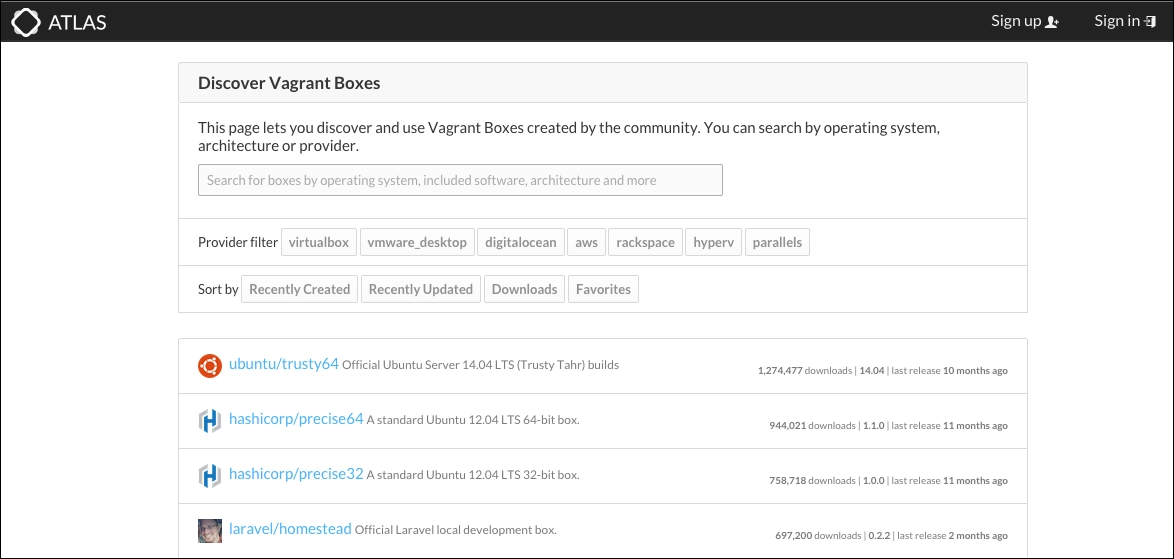Discovering boxes
The Atlas website contains a directory of public boxes for Vagrant (https://atlas.hashicorp.com/boxes/search). Within this directory, we can search for the specific operating system or distribution version that we are interested in:

For each result, we can see the box name, which is formatted as the name of the distributor followed by a slash, followed by the name or distribution name. In the following case, we have the Ubuntu 12.04 LTS release that HashiCorp has provided (named hashicorp/precise64):

If we click in a box, we can see which providers the box supports. In this case, we can use the box with VirtualBox, VMware Fusion, and Hyper-V. It is important to use boxes that support the provider we are using—not all boxes support all providers.
Installing new boxes
To install a public box, we use the vagrant box add command, and pass the name of the box:
vagrant box add hashicorp/precise64
The name of the box can either be a URL or file path to an existing box file (for example...
























































